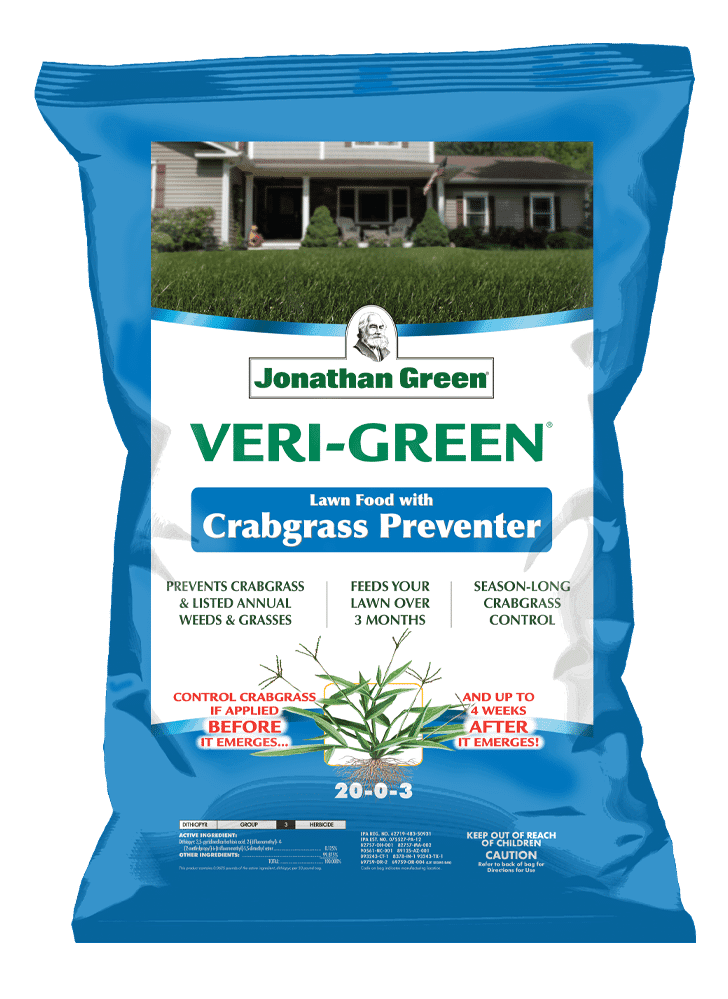Best Time to Fertilize Lawn – Before or After Rain?
When is the best time to fertilize a lawn – before or after a rain? Too much rain could wash away the fertilizer before it has a chance to soak into the soil, so plan to fertilize several days before a heavy rain arrives or several days later. Here are more tips from the professionals at Jonathan Green.
The Jonathan Green company is built upon innovative scientific research and time-honored traditions. We have studied turfgrass and what it needs to thrive since 1881, developing products that provide lasting results year after year. Currently, we use the latest scientific technology to test all of our products to make sure they will perform well on your lawn. The result will be a beautiful green, healthy lawn for you and your family.
About Fertilizer
Fertilizer provides nutrients that allow grass plants to grow and flourish. It keeps the lawn looking good, maximizes the dark green color, and helps it better tolerate seasonal turf stresses, such as heat, drought, and cold. A thick, lush lawn with strong roots can also choke out weeds by preventing them from getting established in the first place.
Fertilizer contains nitrogen, phosphorus, and potassium; three nutrients that are vital to the health of your lawn:
- Nitrogen: This nutrient is responsible for the green color of your lawn as well as lush, vigorous growth.
- Phosphorus: This nutrient stimulates root growth and helps seeds sprout.
- Potassium: This nutrient helps grass resist drought, disease, fungus, wear from foot traffic, and extreme weather conditions.
Should You Fertilize Before or After Rain?
Does it matter if you fertilize before a heavy rain? Yes, it does. This is not a good time to apply fertilizer because a heavy rainfall could wash away the fertilizer before it has an opportunity to break down and be absorbed. This is especially true on steep slopes. If you would rather not waste your time and the money you’ve invested, it’s best to fertilize when no rainfall is expected for two days, or spread the fertilizer before it rains if you’re anticipating only light rainfall. The light rainfall can substitute for watering in the fertilizer after application.
When Should You Fertilize Your Lawn?
Essentially, the perfect time to fertilize your lawn is just as it is running out of food from its last feeding which, with Jonathan Green fertilizer, means about three months after the last fertilization.
Early Spring – In March or April, apply our Veri-Green Crabgrass Preventer plus Lawn Fertilizer to the lawn. This will gently feed it while helping it recover from winter and also control crabgrass before and after it germinates.
Late Spring – In May or June, apply Veri-Green Weed & Feed Lawn Fertilizer. It provides your lawn with everything it needs to grow green and strong, and controls dandelion, clover, chick weed and over 250 other kinds of broadleaf weeds.
Summer – In July or August, loosen up hard soil and balance the pH level to make it optimal for grass growth. Mag-I-Cal® Plus for Lawns in Acidic & Hard Soil is specially formulated to activate the microbial life in your soil to make the nutrients easier for grass roots to absorb.
Fall – In September or October, it’s time to get your lawn ready to survive the winter. Winter Survival Fall Lawn Fertilizer will keep your lawn fed through the winter and fend off late winter/early spring turf diseases, such as pink or gray snow mold.
Mentioned Products
If you have questions about the best time to fertilize a lawn, before or after rain, visit Jonathan Green online or contact your nearest independent hardware or home and garden store where you will always get valuable lawn care advice.



